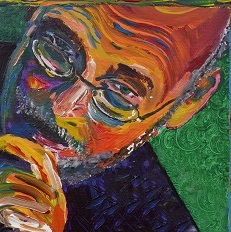A berth on the Tsukuba
Understanding beriberi took research around the world over centuries.
Nicholaes Tulp was weary. He felt he had every right to be exhausted—it was his 78th birthday. He was a physician and a politician. He had been elected mayor of Amsterdam four times since 1660. He considered himself a naturalist as well as an anatomist. He was Praelector Anatomie of the Amsterdam Guild of Surgeons, and once a year he publicly dissected the body of a criminal who had been hanged. Back in 1632, he had even been the subject of a painting by an artist named Rembrandt, whom he had treated for the belief that his bones were turning into jelly.

Tulp had organized the apothecaries of Amsterdam and dreamed of traveling the world with the Dutch East Indies Company. Now, in his later years, he had become a writer, trying to capture his medical observations before he died. He had seen patients from his own country, and from around the world, brought back to Amsterdam with a variety of strange tropical diseases. He sat down with his quill and began to write, this time to his book publisher in Leyden, but his mind was far away, on a ship sailing across the ocean to parts unknown.
Two centuries later, on the other side of the planet, Kanehiro Takaki was proud to learn “Dutch medicine” from a great physician, Ryosaku Ishigami. Takaki went on to serve in the Royal Japanese Navy. He became focused on the disease beriberi, shocked by its high incidence. He discussed this with his teacher and heard about the case of a young traveler described in Tulp's “Observationes Medicae”: Joost de Vogelaar, who developed weakness of the limbs, no power over his mind, and obstipation. The patient was treated with a variety of petroleum salves, cathartics, and herbs, but never fully recovered. The classic Dutch treatment seemed to be of little benefit.
Kikuchi Haruo was excited just to be a Yontosuihei, the lowest ranking recruit of the Japanese Navy. He was the fourth son of a poor farming family and was bored of his small village. Through a bit of luck, he had been assigned with his good friend Shiga to a naval training vessel, the Tsukuba. It was a dreary day in February at the port of Shinagawa, but he couldn't be happier. Shiga, on the other hand, was feeling a sense of dread. He had heard that the ship would be sailing for many months. His older brother Satomi had been on another training vessel, the Ryūjo. That vessel had returned to Japan just four months ago after his brother had nearly died aboard. Almost half the crew had fallen ill and many had perished. It had given the idea of maritime adventure an ominous tone. Kikuchi punched Shiga in the arm and told him not to worry so much.
Kanehiro Takaki had heard about the terrible events on the Ryūjo. On the ship, 169 out of 376 crew members had developed beriberi and 25 had died. When he returned to Japan in 1880 after studying in England, he studied the prevalence of the disease, both in sailors and civilians, and noticed that officers and nobility developed it at a much lower rate than sailors, prisoners, and even students. He wondered if the cause could be diet, not a phlegmatic humor as he had learned from the Dutch textbook. He measured the nitrogen and carbon levels in food and hypothesized that the difference could be the protein content.
Eight years later, there was still no cure for beriberi. But the Tsukuba was about to make a voyage to Hawaii, then on to Russia, providing Takaki the perfect opportunity to test his theory. James Lind, the British naval surgeon, had cured scurvy with lime juice; now it was Takaki's turn to cure beriberi. He convinced the naval leadership to change the route to follow that of the Ryūjo exactly, but to alter the sailors' diet to increase protein and use whole-grain rice instead of white. The comparison between the two voyages, only different in the food, would tell the story.
On board, Kikuchi and Shiga had the greatest time of their lives. That is, after they got over their seasickness. The stories they had heard about hard work and horrible food on board were just not true. Well, at least the food part was not true; they did work very hard. They had eaten better on board than they did at home and had seen many interesting places. Though Shiga had feared the disease beriberi, which had decimated his brother's ship just a year earlier, only 14 of the 333 members of their crew had contracted the ailment, and none had died. The voyage was a great success for them, and for Takaki. Something in the diet had saved these sailors.
A decade later, in Holland, another physician, Christiaan Eijkman, had been sent to the Dutch East Indies to study beriberi. He identified it in chickens given polished rice, but not in those that ate whole grain, and hypothesized that the latter had an anti-beriberi factor. His own studies were impacted by the ravages of malaria, but his efforts led others toward the isolation of thiamine, a deficiency of which leads to beriberi. He eventually would share the Nobel Prize in 1929 for his work on the discovery of vitamins.
Though Kanehiro Takaki never won the Nobel Prize, he had a long and illustrious career. He was appointed Navy Surgeon General and a Baron and was the first person awarded the title of Doctor in Japan. He helped found Tokyo Charity Hospital to teach and promote the English method of medicine, which is now known as Jikei University School of Medicine.



